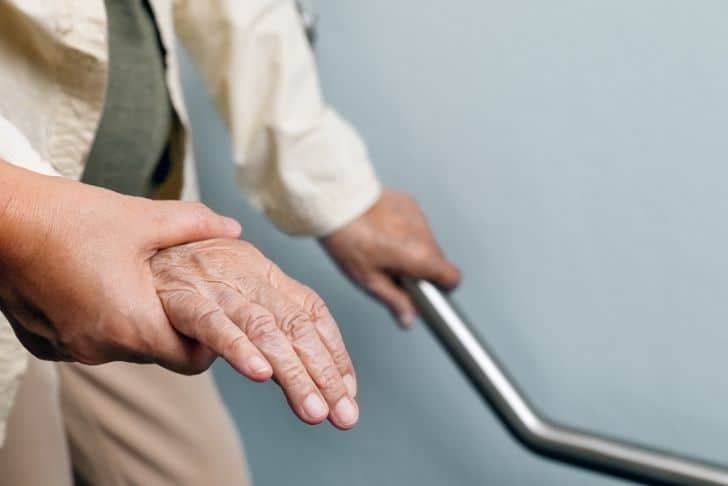Navigating the complex and crucial matter of choosing the right mobility aid can be notably simplified with the guidance of a dedicated healthcare professional. Sized up to your unique needs and capabilities, various options ranging from canes, walkers, and rollators, to power scooters and wheelchairs – both manual and power-driven – can provide varying degrees of support. Balancing your range of motions, strength, and stability, aids like canes cater to minimal balance impairments while power wheelchairs accommodate severe mobility issues often associated with progressive diseases. Fret not; insurance can often chip in for such durable medical equipment, although anything beyond the basics may need to be pocketed by you. But remember, hasty or premature use of these aids may inadvertently hamper your mobility and overall health, hence a physical check-up and careful counsel from your doctor is inescapable.

Understanding Mobility Aids
Definition and purpose of mobility aids
Mobility aids are devices designed to assist walking or otherwise improve the mobility of individuals who have a mobility impairment. The purpose of mobility aids is to aid individuals in improving their capability to move independently, reduce pain, or prevent potential falls and injuries.
Different types of mobility aids
There are various types of mobility aids available to cater to different mobility impairments. Some of these include canes, walkers, rollators, power scooters, and both manual and power wheelchairs. The selection of a suitable aid largely depends upon the user’s specific needs, abilities and the degree of mobility impairment.
Basic features and uses of each mobility aid
Each type of mobility aid has its unique features and uses. Canes are typically for those with minimal balance impairments or one leg significantly weaker than the other. Walkers and rollators offer greater support and stability, ideal for those who need more support than a cane offers. Power scooters assist those who lack the ability to walk long distances, while manual wheelchairs offer significant support for those with more severe mobility concerns. Lastly, power wheelchairs, with a variety of makes and models, cater to the needs of individuals with severe mobility impairments.
Role of Healthcare Professionals in Mobility Aid Selection
Medical professionals as Advisors
Medical professionals play a crucial role when it comes to selecting the right mobility aid. Their deep understanding of the patients’ medical conditions, mobility concerns, and physical abilities allows them to advise on suitable equipment that fits the user accurately while meeting the individual’s needs.
Physical examinations and referrals
Physical examinations by healthcare professionals are instrumental in identifying the level of mobility impairment. Post physical examination, doctors can provide a referral for appropriate mobility aid equipment. Such referrals are pivotal in helping to find the precisely needed equipment.
Conducting Mobility assessments
Healthcare professionals carry out mobility assessments which involve evaluating an individual’s gait, balance, muscle strength, endurance, joint range and more. The results of this comprehensive assessment contribute significantly to the decision-making process of selecting the most appropriate mobility aid.
Recommending appropriate aids based on patient needs
After carrying out the necessary physical examinations and assessments, healthcare professionals then recommend the most suitable mobility aids for the patient. The recommendation is based on the patient’s physical capacities, the level of mobility impairment, and the individual’s daily life and environmental conditions.
Canes as Mobility Aids
Ideal users of cane
Canes are perfect for individuals who have minor balance issues or have one leg considerably weaker than the other. It provides the needed balance and support to move around independently.
Single point or a quad base – which to choose?
A cane may have a single point tip or a quad base, offering four feet for added stability. The choice between the two largely depends upon the user’s specific needs. If greater stability is required, a quad base cane is generally advised.
Healthcare professional’s role in guiding cane selection
Healthcare professionals guide patients in selecting the most appropriate canes. They take several factors into consideration such as the patient’s height, weight, the strength of their arms and hands, and the degree of stability needed. Their guidance helps ensure the cane is comfortable and provides effective support.
Understanding Walkers and Rollators
Basics of Walkers and Rollators
Walkers and Rollators are mobility aids that offer more considerable support than canes. They typically feature frames that are brought forward as the user walks. Rollators also include wheels to provide greater ease of movement.
Who are they for?
Walkers and Rollators are ideally for individuals who require more support than what a cane can provide. It necessitates moderate hand and arm strength to operate effectively.
Expertise of healthcare professionals in selecting walkers and rollators
Healthcare professionals lend their expertise to help patients choose the most suitable walkers or rollators. Their understanding of the patient’s physical strength, balance, and overall health ensures the selected aid is comfortable and safe for the patient and fits their unique needs.

Power Scooters as Mobility Support
Functionality and key features of power scooters
Power scooters essentially feature a seat over two rear wheels, a flat area to place the feet, and handlebars to turn one or two steerable wheels. They are battery-operated and suitable for individuals who can sit upright for extended periods and control the scooter’s throttle.
Identifying the right user for power scooters
Power scooters are ideally for those who have difficulty walking long distances but possess the capability to sit upright and control the device’s throttle effectively. Healthcare professionals play a vital role in identifying such individuals through thorough physical and mobility assessments.
Importance of a healthcare professional in scooter selection
Healthcare professionals are instrumental in guiding the selection process of suitable power scooters. They consider factors such as the patient’s ability to control the scooter, their physical strength, endurance, and the type of terrain where the scooter will be used, among other things.
Choosing Manual Wheelchairs
Key characteristics of manual wheelchairs
Manual wheelchairs are typically characterized by their large rear wheels, enabling the user or an assistant to propel them. They range from standard to lightweight and ultra-lightweight designs and can be customized in terms of position, seat width, depth, back height, angle, and more.
Identifying when a manual wheelchair is needed
Manual wheelchairs are required when an individual cannot walk on their own or use other mobility aids due to severe mobility impairment. These could be the result of various reasons such as significant strength and endurance limitations, progressive diseases, or recuperation from a surgery or injury.
Role of healthcare professionals in manual wheelchair selection
Healthcare professionals play an essential part in not just identifying the need for a manual wheelchair but also guiding on the selection of the most suitable one. They help understand the patient’s bodily dimensions, physical abilities, and personal preferences to select a comfortable and effective wheelchair.

Power Wheelchairs Selection
What are power wheelchairs and who are they for?
Power wheelchairs, like power scooters, are battery-operated and controlled by a joystick or similar control device. They come in different makes and models and are intended for people with severe mobility impairments.
Expert guidance in power wheelchair selection
Selecting the right power wheelchair demands careful consideration of several factors, including the patient’s mobility impairment level, physical strength, hand coordination, and environments where the wheelchair will be used. Healthcare professionals’ expert advice ensures that the selected power wheelchair effectively meets all the patient’s unique requirements.
Financial Aspects of Mobility Aid Selection
Understanding insurance coverage for mobility aids
Most insurance providers cover durable medical equipment, which often includes mobility aids. However, the process might involve substantial paperwork, and coverage might be limited only to basic devices. Any extras or accessories would likely have to be borne by the patient.
Potential out-of-pocket expenses
While insurance may cover a considerable portion of the mobility aid cost, there would be potential out-of-pocket expenses. This may involve costs related to extras or accessories not covered by insurance, maintenance, servicing, and even potential modifications to the user’s home environment for easier maneuverability.
Navigating insurance paperwork with healthcare providers
Finding one’s way through insurance paperwork can be daunting. Healthcare providers often help simplify this process due to their expertise in dealing with such matters.
Cause and Effect of Premature Mobility Aid Usage
Downsides of using mobility aids before absolutely necessary
Initiating the use of mobility aids sooner than needed can have negative consequences. It may lead to a loss in the patient’s own mobility over time, decrease activity levels, and negatively impact overall health and independence. Therefore, the need for mobility aids should be thoroughly assessed and affirmed by healthcare professionals.
Role of healthcare professionals in timing mobility aid usage
Healthcare professionals play an indispensable role in determining when mobility aid usage should be initiated. Incorrect or premature usage can lead to negative effects. Therefore, it is vital to rely on their expert advice.
Deciding the Most Suitable Mobility Aid: A Final Note
Taking user needs and abilities into account
The choice of a suitable mobility aid should always consider the specific needs, physical abilities, day-to-day activities, and environments of the user. A ‘one size fits all’ approach does not apply in mobility aid selection.
Importance of proper guidance from healthcare professionals
Healthcare professionals’ guidance in selecting a mobility aid is crucial. Their comprehensive understanding of the individual patient’s health status and physical abilities helps ensure that the selected mobility aid is just the right one – contributing significantly to the patient’s confidence, independence, and overall quality of life.
